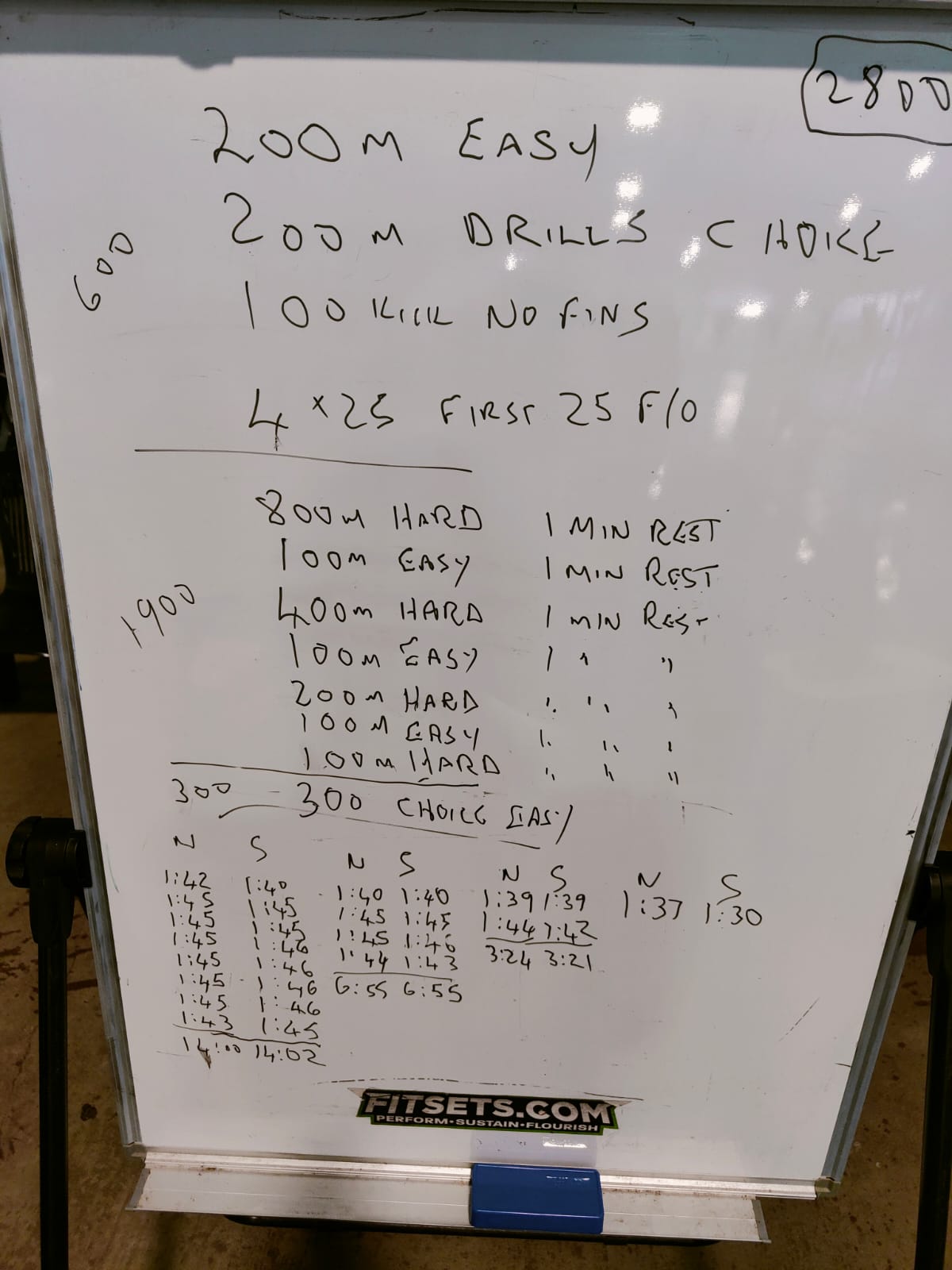
Pacing strategies are individual. The best depends on many variables: fitness, distance experience, stamina, mindset and intuition, to name a few.
Our swim squad is currently working on pacing to determine the best strategy for each scenario. It is trial and error. Each athlete is tested over varied distances on each strategy, measuring results.
There are three basic approaches:
Build
Sometimes referred to as a negative split. You start at an intensity you can increase. As you progress, you increase intensity slowly to slightly increase or maintain pace as stress accumulates and suffering increases.
This is the most common strategy suggested by coaches. It can be practised, easily coached, and executed through speed and heart rate metrics. The start of the race is controlled, and as the race progresses, the athlete has more discretion on intensity as the remaining distance decreases. A safe strategy for achieving a fixed or small range target.
Highly recommended for novices and inexperienced. Also recommended for time-trialists after a predetermined outcome.
Push and hold on
With this strategy, you start at a high intensity and hold on throughout. As you progress, you may find the pace reducing and the stress maxes out; however, those with a strong mindset can push through the suffering and achieve a better result than the build strategy.
This strategy is commonly used by inexperienced athletes who believe in the “Go hard or Go home” approach, and generally, it does not end well. Experienced athletes can use this strategy in true racing situations where the pacing is used to break or follow competitors. This takes an extraordinarily strong mindset and is reserved for those who can truly suffer.
Highly recommended for competitive racers with a strong mindset and much experience. Not suited for all.
Surge
Surging is a combination of build and push/hold. You surge at an intensity slightly higher than you think you can sustain for the remaining race distance. As the suffering increases to an uncomfortable level, you reduce the intensity a little to recover. Once recovered, you surge again. Most athletes discover they only need to reduce marginally to recover with practice. This approach helps us avoid settling on a pace or assuming the pace of those around us.
This strategy allows intermediate athletes to build race experience but still seek results. When trying this strategy, I sometimes ask the athlete to control the race’s first half and use surging in the latter half.
Highly recommended for intermediate athletes and novice athletes unsure of how to pace to build race experience. In training, I frequently provide coached athletes “Unders and overs” sets where they modulate between slightly above and slightly below race pace. They often achieve personal bests in this session, improving their Time Trial results for the same distance.
In conclusion, the pacing strategy is highly individual. The key is to test, practice and measure. Your ideal strategy may differ by distance and environmental conditions.
